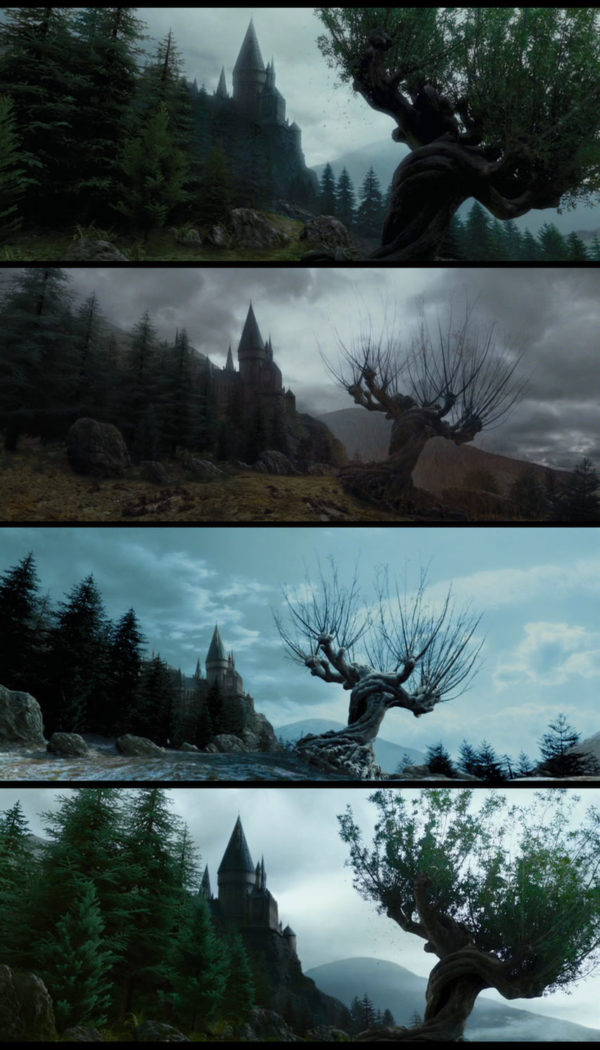
Last night my wife and I re-watched Harry Potter and the Prisoner of Azkaban. The movie deals with time: how a prisoner does his time, how time brings back old wounds, and how we can use time to rewrite our stories. One device director Alfonso Caurón uses to show the passage of time is shots of the Whomping Willow in each season. (Stitched together in the image above.)
For me, the Harry Potter movies (I’ve only actually read book 7) have always been the story of going to school. The story starts when the summer is ending, and the story ends when summer begins again. Growing up, I was always like Harry: my life tied to the school year, I dreaded the summer and couldn’t wait for fall to come. The death of summer = the hope of new adventures. (Books, girls, etc.)
Before I went to bed last night, I came across this perfect passage in Patricia Lockwood’s Priestdaddy:
I have lived for the last eight years in seasonless places, where things do not die, but revolve in a constant tropic sun. I had forgotten how the fall sharpens pencils, gray and colored ones. I had forgotten that when you pay attention to the seasons, you are returned to school and all its feelings, the freedom of three o’clock and the nameless dread of Sunday night, when the sky looms over you like the deadline of some paper you haven’t even started. I want to drink cocoa out of a thermos; I want to go to a high school football game.
School is about to start here in Texas, but summer will continue to blaze for at least another two months. I wonder what time feels like to people who grew up here. I’ve lived in this seasonless place for over a decade — for 11 years I’ve lived in a constant state of seasonal disorientation. (And deprivation.) I want to feel that feeling again, of how “fall sharpens pencils.”